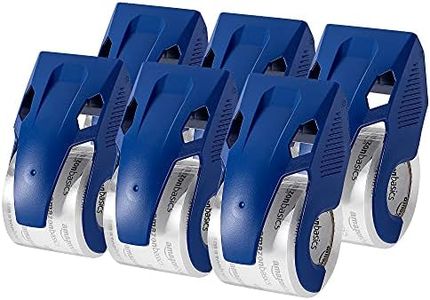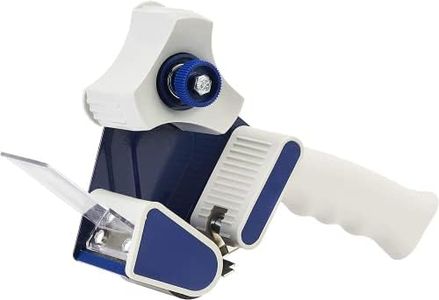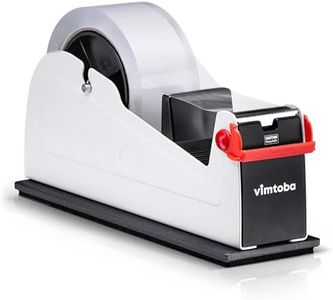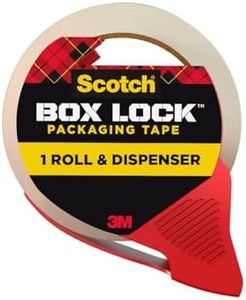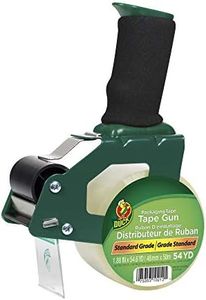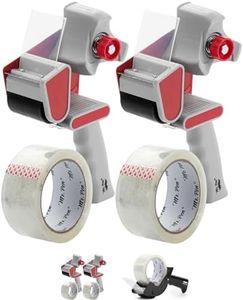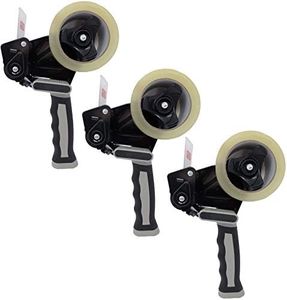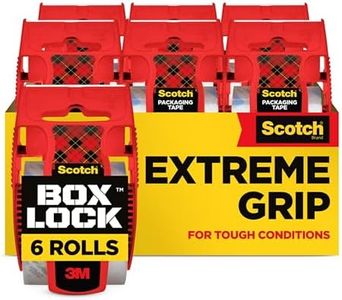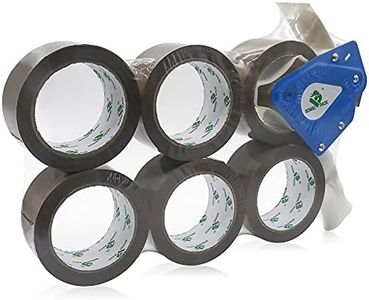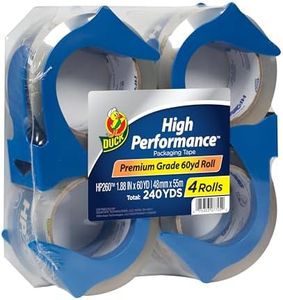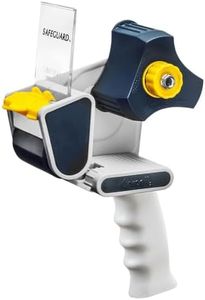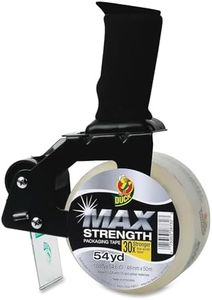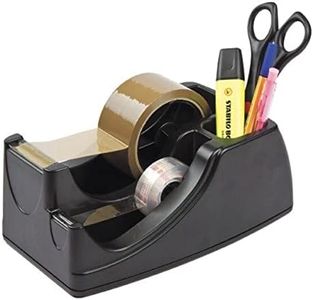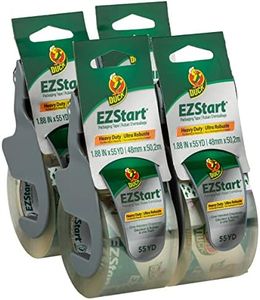We Use CookiesWe use cookies to enhance the security, performance,
functionality and for analytical and promotional activities. By continuing to browse this site you
are agreeing to our privacy policy
10 Best Packing Tape Dispenser
From leading brands and best sellers available on the web.By clicking on a link to a third party's website, log data is shared with that third party.
Buying Guide for the Best Packing Tape Dispenser
Choosing a packing tape dispenser might seem straightforward, but picking the right one can make your packing tasks much more efficient and less frustrating. The main factors to consider are how much packing you do, the types of tape you use, and how comfortable or safe you want the dispenser to be. By understanding the key specifications, you can match your choice to your own needs, especially whether you’ll be packing just occasional boxes, moving house, or handling lots of shipping in a business setting.Tape Width CompatibilityTape width compatibility refers to the maximum width of tape that the dispenser can handle. Most common widths for packing tape are 2 inches and 3 inches. The dispenser must match the width of tape you plan to use; otherwise, the tape might not fit or operate smoothly. For light, occasional tasks or typical household moving, a 2-inch compatible dispenser is usually enough. However, if you regularly seal large, heavy, or industrial boxes, a 3-inch compatible dispenser provides extra tape coverage and strength. Always check what tape you’ll mostly be using and match the dispenser accordingly.
Core Size CompatibilityCore size compatibility means the diameter of the inner roll of tape that fits into the dispenser, commonly 1-inch or 3-inch cores. It's important because if the core size doesn't match, the tape roll won't fit. Most traditional packing tapes for box sealing use a 3-inch core, which suits heavy-duty or frequent use. Some smaller dispensers, especially handheld or craft types, use 1-inch cores. Pick based on the kind of tape rolls you'll be buying most often.
Cutter Blade TypeThe cutter blade type refers to the design and sharpness of the blade that slices the tape. Some dispensers have straight blades, while others are serrated, and some are even retractable for safety. A sharper or serrated blade makes it easier to quickly cut the tape, but may be less safe if left exposed. If safety is a concern, look for dispensers with retractable or covered blades. For people who pack a lot or value speed, a sharp, easily accessible blade might be better, but for homes with children or limited use, safety features become more important.
Handle ErgonomicsHandle ergonomics refer to how comfortable and easy the dispenser is to hold and operate. Some dispensers have soft grip handles or contoured shapes to reduce hand fatigue. The importance of this spec increases with how much packing you do; for occasional moving or home use, basic handles work fine, but if you'll be sealing boxes for long periods, an ergonomic handle can save your hands and wrists a lot of strain. Try to get a feel for the handle design and see what feels comfortable for your hand size and strength.
Load Type (Top Load/Side Load)Load type is about how you insert the tape roll into the dispenser, either from the top or from the side. Top load dispensers can be faster to reload but may be bulkier, while side load types are often sleeker and can keep the roll more securely in place. If you'll be changing tape rolls often, top load types might save you time. For lighter or occasional use, side load types are simple and easy to manage.
Tension AdjustmentTension adjustment is a feature that lets you control how easily the tape rolls out of the dispenser. For tapes that are too sticky or thick, having the ability to adjust the tension makes dispensing smoother and prevents waste from tape that sticks or snaps. If you use different types of tape, or work in varying temperatures that affect tape stickiness, a dispenser with tension adjustment can give you greater control. For single-task, occasional users, a fixed-tension dispenser is usually enough.
